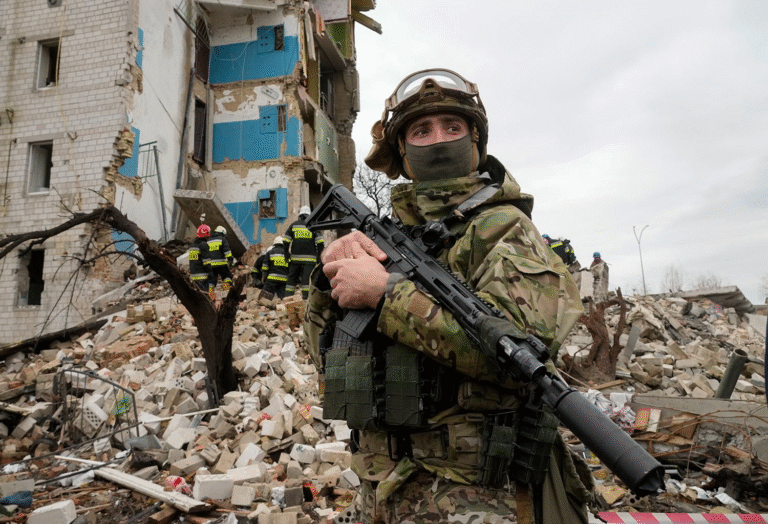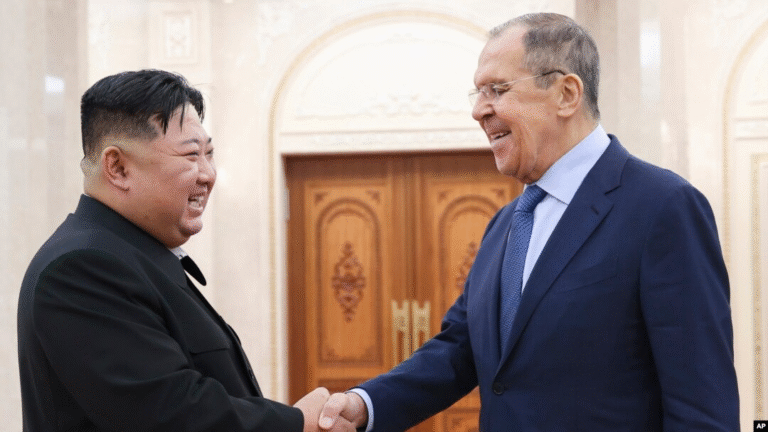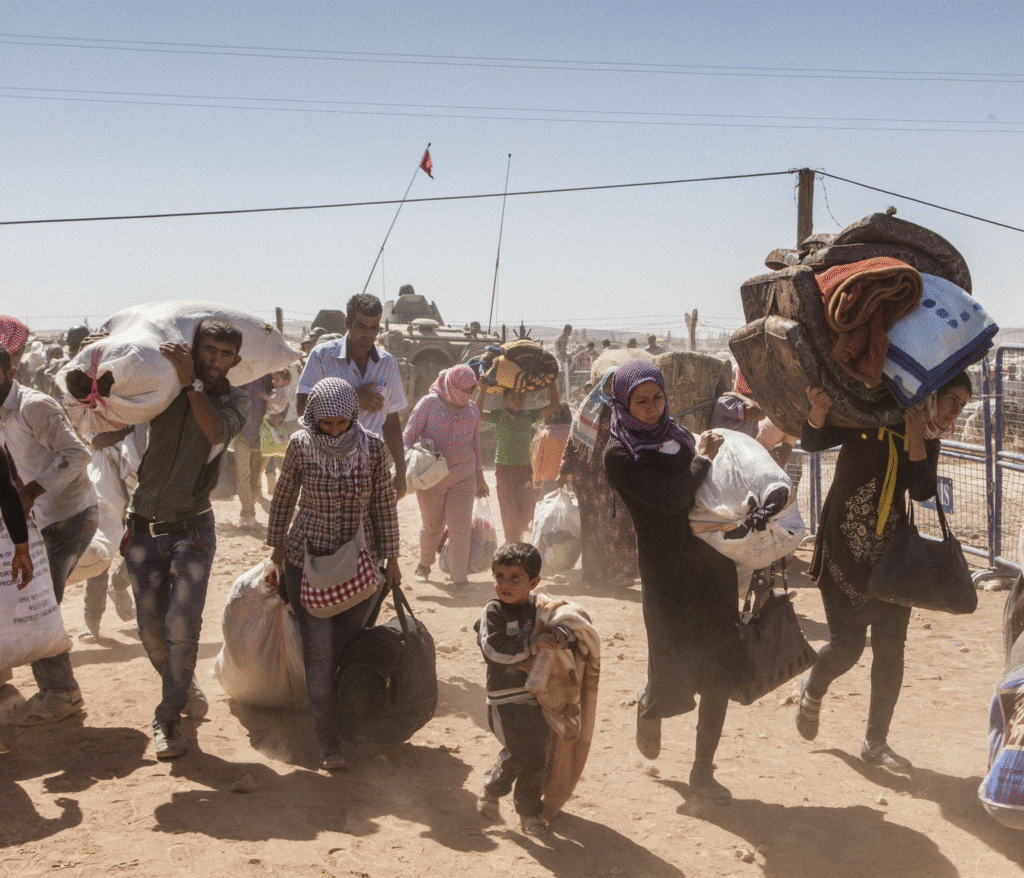
Syrian refugees cross the border into Turkey, 2014, Photo: Time/Ivor Prickett
Sophie Gilpin
The America-Eurasia Center
www.EurasiaCenter.org
Eurasia Brief
Middle East Program/Humanitarian Program
America-Eurasia Business Coalition
www.usebc.org
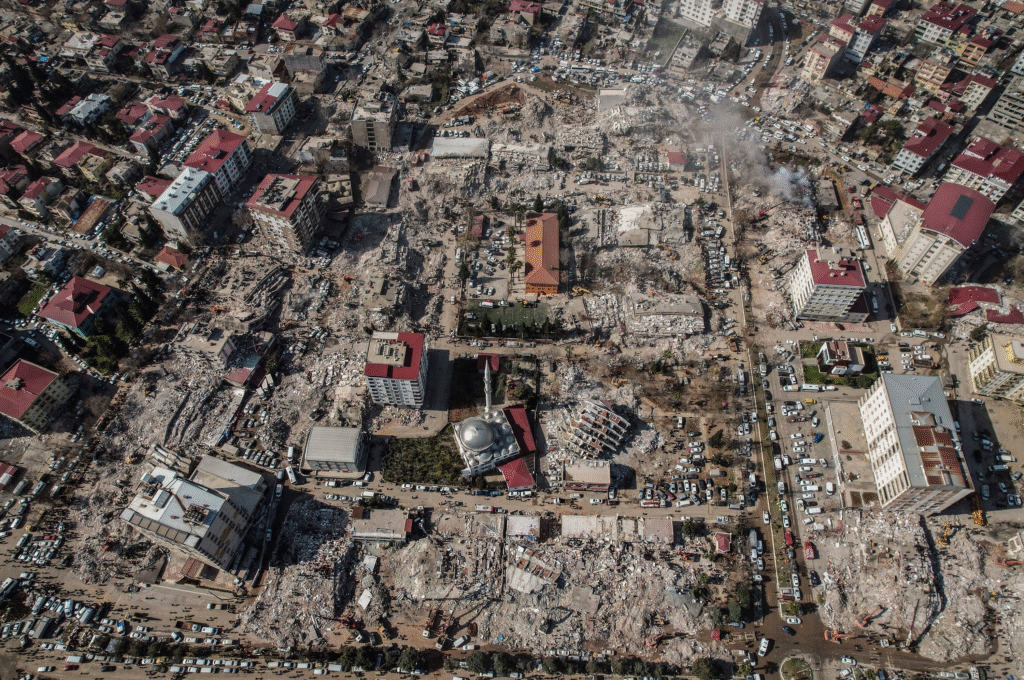
Aerial photo shows the damage done by the February earthquakes in Turkey and Syria, Photo: CNN
While the experiences of Syrian refugees are diverse and varied, the hardship of refugee
status has not subsided for the hundreds of thousands of Syrians still displaced outside of their
home nation. In recent years, humanitarian funding and resources have been reallocated due to the
war in Ukraine, leaving many Syrians without the support they previously received from various
governments and organizations. This hardship was then further exacerbated by the earthquakes that
hit both Türkiye and Syria in early 2023, leaving a death toll of over 55,000 and thousands more
injured or missing.1 In addition to increasing unemployment and economic unrest across the
Levantine and North African regions of the Middle East, Syrian refugees are not the only group
struggling to find employment opportunities.2 Despite the surge of resources allocated to meet the
needs of those affected by the earthquake, this combination of factors has left a sizeable population
of Syrian refugees without enough income to meet their most basic needs.3
To understand the gravity of the Syrian situation, one must first evaluate the economies in
which many of these refugees exist. Lebanon, home to the highest number of Syrian refugees in the
Levant, ranks among the world’s worst economic crises.4 Jordan faces high unemployment and an
increasing strain on its natural resources.5 Egypt has faced economic contraction due to the
COVID-19 pandemic and although they have experienced some economic growth, they still face
issues of unemployment and challenges to development.6 Finally, Iraq, home to over 260,000
Syrian refugees, also suffers from high rates of unemployment and economic instability. Given the
extensive years of war in Iraq as well as its extreme oil dependency and the COVID-19 crisis, the
situation is dire, and many Iraqis feel uncertain about the future.7 Each of the nations playing host
to the largest numbers of Syrian refugees in the region have preexisting political or socioeconomic
issues that are seemingly exacerbated by the refugee crisis. This can easily agitate the local
population who may feel as though the influx of refugees are stealing their already scarce
resources.
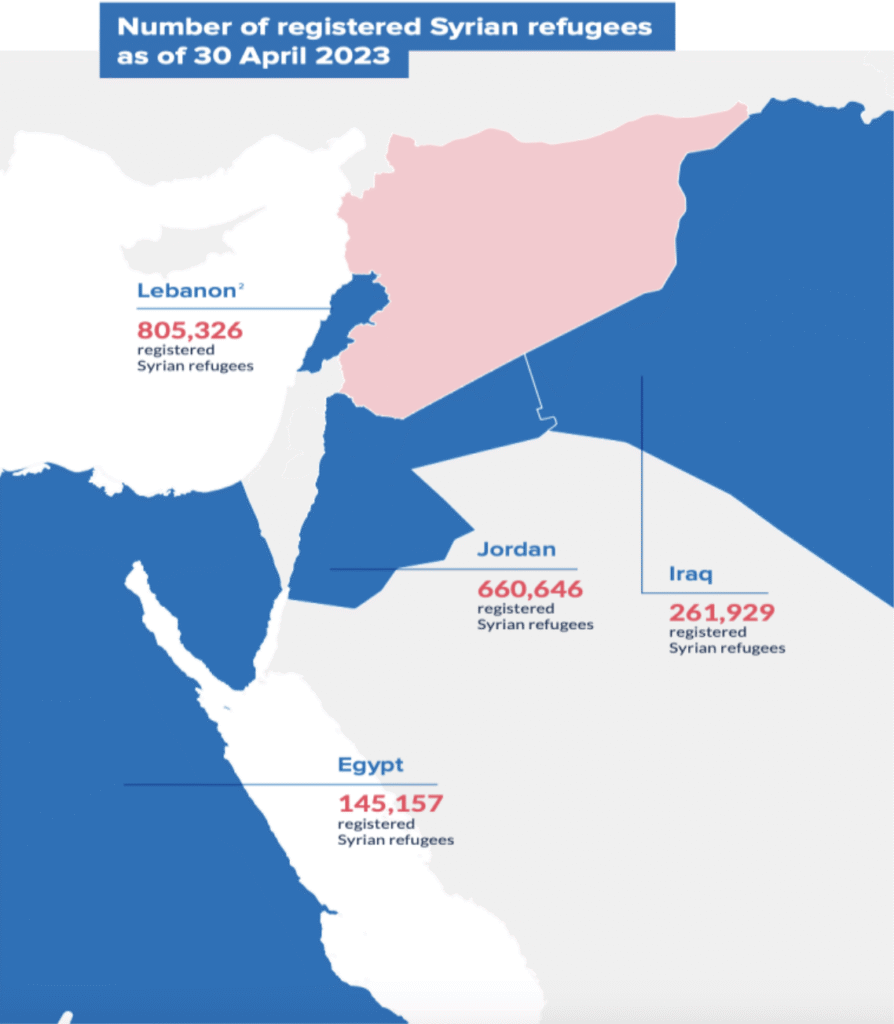
Latest figures on registered Syrian refugees in the Levant and Egypt, Source: UNHCR
In addition to the scarcity of resources and opportunity within host communities, there has
been a dramatic decrease in funding. According to UNHCR, there are about 6.5 million Syrians
registered as refugees.8 Despite an increase of about 0.2 million refugees in five years, funding has
declined extensively. In 2022, UNHCR’s financial requirements were 45% met with an earmarked
value of $844,868,153 from various governments and private organizations.9 As of 2023,
UNHCR’s financial requirements have only been 30% satisfied, with an earmarked amount of
$564,628,741, despite a lower financial requirement compared to the previous year.10

A pie chart overview of UNHCR’s financial requirements and the extent to which they were met, Source: UNHCR
The difficulty of the Syrian refugee crisis ultimately lies in its longevity. As the war stretches
on and conditions in Syria remain tumultuous, refugees themselves begin to give up hope on returning
any time soon11 and as the charts suggest, international aid is reallocated to new crises such as the
war in Ukraine or Afghan refugees fleeing the Taliban. The world is a dynamic place with finite
resources. As time progresses and new challenges spring up, resources are moved to new places.
Although the plight of the Syrian people continues, international resources are put to new use. This
is not necessarily a death sentence for humanitarian support, but the lack of funding can have adverse
effects on local organizations implementing aid to Syrian refugee populations in the Levant and North
Africa. There tends to be a divide between the Global North and Global South when it comes to the
economic effects of large refugee populations. Generally, the more developed economies of the
Global North (regions such as Europe or North America) face a much lower burden on their
infrastructure and social services as opposed to the Global South.12 The large population of refugees
in the Levant and North Africa puts an even greater strain on welfare programs, resources, and
employment sectors.
This is why local organizations and partners are essential to administering aid. The impact
that one small organization can have in a single community can be great. When an office closes
because of a loss of funds, it has a negative impact on the community it served. And when this
happens time and time again in cities all over the region, it has an adverse effect on the entire refugee
population. The key to improving the condition of humanitarian aid to Syrian refugees is to partner
with local organizations working for the long-term welfare of the Syrian people, both in and outside
of Syria. In a 2022 advocacy letter to the Secretary General of the United Nations and the President
of the United Nations General Assembly, thirty-nine Syrian humanitarian and NGOs called for
equitable partnerships between donors, INGOs, the United Nations, and Syrian NGOs; increased aid
with the purpose of capacity building for local organizations; an across the board effort to include
Syrian people and organizations in decision-making about aid and policy; and funding for recovery
and resilience programs geared towards the long-term success of Syrian families including projects
to improve water and sanitation, housing, education, and cash and vouchers for livelihoods.13
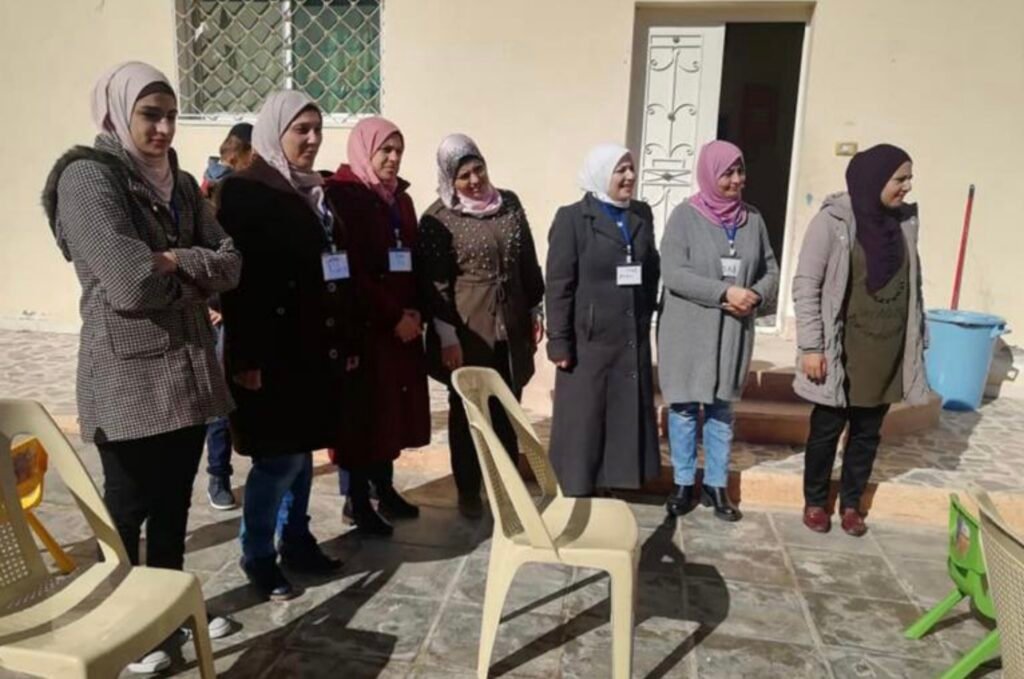
Syrian women serve as volunteers at a local NGO office in Mafraq, Jordan, Photo: Tearfund Germany
The overall consensus is that involving Syrian refugees as well as locals from the host
community in the aid process is perhaps the greatest way to sustainably support both populations.
The current condition of funding may seem bleak, but there are teams of people, local and
otherwise, working together to better conditions for all people affected by the war. Although
resources are finite and support is limited, maximizing the effect of what does exist will guarantee
the best possible outcome for the future of supporting Syrian refugee populations. Organizing aid
efforts through local partners and involving Syrian people in the process is paramount to making
the most of the funding that does exist, as well as fostering cooperation and understanding between
both the refugee and host populations, ensuring a brighter future for the Levant and North Africa as
well as the Syrian people.
- “2023 Turkey and Syria earthquake: Facts, FAQs, how to help,” World Vision, August 9, 2023,
https://www.worldvision.org/disaster-relief-news-stories/2023-turkey-and-syria-earthquake-faqs#fast-facts. ↩︎ - “Amid Record Youth Unemployment, Over Half of Arab Youth in the Levant and North Africa want to Emigrate for Better Opportunities: 15th Annual ASDA’A BCW Arab Youth Survey,” U.S. Newswire, August 9, 2023, https://www.proquest.com/docview/2847613316?pq-origsite=primo. ↩︎
- “Eighth Regional Survey on Syrian Refugees’ Perceptions & Intentions on Return to Syria,” UNHCR, May 2023, https://reporting.unhcr.org/syria-eighth-regional-survey-syrian-refugees’-perceptions-and-intentions-return-syria. ↩︎
- “The World Bank in Lebanon Overview,” The World Bank, November 2, 2022, https://www.worldbank.org/en/country/lebanon/overview ↩︎
- “The World Bank in Jordan Overview,” The World Bank, January 9, 2023,
https://www.worldbank.org/en/country/jordan/overview#1. ↩︎ - “The World Bank in Egypt Overview,” The World Bank, May 5, 2023,
https://www.worldbank.org/en/country/egypt/overview#1. ↩︎ - “The World Bank in Iraq Overview,” The World Bank, June 1, 2022,
https://www.worldbank.org/en/country/iraq/overview. ↩︎ - “Refugee Data Finder,” UNHCR, 2022, https://www.unhcr.org/refugee-statistics/download/?url=HF39gS ↩︎
- “Syria Situation Response Funding Update- 2022,” UNHCR, February 28, 2023, https://reporting.unhcr.org/syriasituation-response-funding-2022. ↩︎
- “Syria Situation Response Funding Update- 2023,” UNHCR, September 1, 2023, https://reporting.unhcr.org/syriasituation-response-funding-2023. ↩︎
- Ibid., 5, https://reporting.unhcr.org/syria-eighth-regional-survey-syrian-refugees’-perceptions-and-intentionsreturn-syria. ↩︎
- Uri Dadush and Mona Niebuhr, “The Economic Impact of Forced Migration,” OCP Policy Center, Carnegie
Endowment for International Peace, April 22, 2016, https://carnegieendowment.org/2016/04/22/economic-impactof-forced-migration-pub-63421. ↩︎ - “39 Humanitarian and Syrian NGOs Call for More Sustainable, Locally Driven Cross-border Aid Effort,” Refugees International, September 21, 2022, https://www.refugeesinternational.org/advocacy-letters/39-humanitarian-andsyrian-ngos-call-for-more-sustainable-locally-driven-cross-border-aid-effort/. ↩︎


